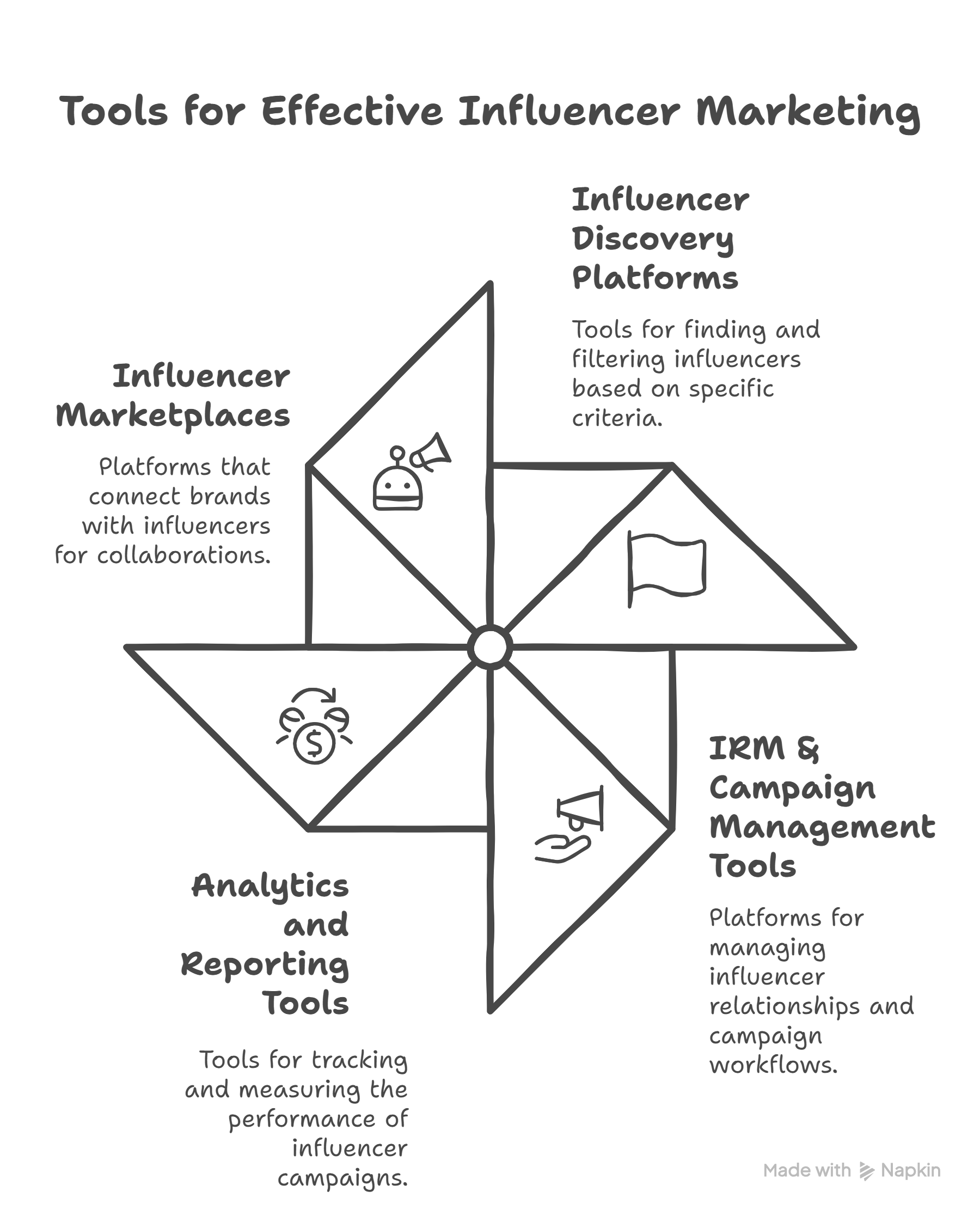Tools for Influencer Marketing
Just like other specialized areas of digital marketing such as Content Marketing, SEO, Local SEO, and Mobile SEO rely on specific tools to improve efficiency and effectiveness, influencer marketing also has its own suite of dedicated tools. These tools help brands manage the complexities of finding, managing, and measuring influencer collaborations.
Here are the main categories of tools used in influencer marketing:
1. Influencer Discovery Platforms
- Function: These tools act like large databases or search engines specifically for finding influencers. They allow brands to filter influencers based on criteria like niche, location, audience demographics, follower count, engagement rate, and keywords.
- Why it Matters: Manually searching for the perfect influencer across multiple platforms can be incredibly time-consuming. Discovery tools streamline this process, saving significant time and effort.
- Relatable Example: Think of it like using a specialized real estate website (like Zillow or Rightmove) to find a house with specific features (bedrooms, location, price range) instead of driving around neighborhoods hoping to spot a 'For Sale' sign. These tools help you efficiently find influencers that meet your specific campaign requirements.
2. Influencer Relationship Management (IRM) & Campaign Management Tools
- Function: Once influencers are identified, these platforms help manage the entire relationship and campaign workflow. This includes outreach tracking, communication logs, contract management, content approvals, and payment processing.
- Why it Matters: Managing multiple influencer relationships, deliverables, and communications via email and spreadsheets can quickly become chaotic. These tools centralize everything, keeping campaigns organized and on track.
- Relatable Example: Imagine managing a group project. Instead of relying on scattered emails and messages, you use a project management tool (like Trello or Asana) to assign tasks, track progress, share files, and communicate in one place. IRM tools do this for influencer campaigns.
3. Influencer Analytics and Reporting Tools
- Function: These tools focus on tracking the performance of influencer campaigns and measuring their impact. They analyze metrics like reach, engagement (likes, comments, shares), website traffic generated, conversions (sales, sign-ups), and calculate Return on Investment (ROI).
- Why it Matters: Measuring success is crucial. Analytics tools provide data to understand what worked, justify marketing spend, and optimize future campaigns.
- Relatable Example: This is like having a detailed dashboard for your car that shows not just your speed, but also your fuel efficiency, engine performance, and trip distance. Analytics tools give brands a detailed view of how their influencer campaigns are performing against key business objectives.
4. Influencer Marketplaces
- Function: Marketplaces act as a direct connector between brands looking for influencers and influencers looking for collaborations. Brands can post campaign briefs, and influencers can apply, or brands can browse influencer profiles and make offers directly through the platform.
- Why it Matters: They can simplify the initial connection process, especially for brands new to influencer marketing or those looking for influencers for specific, short-term campaigns.
- Relatable Example: Think of it like a job board (like Indeed or LinkedIn Jobs) specifically for influencer gigs. Companies post their needs ("job description"), and influencers ("job seekers") can apply or be scouted directly on the platform.
Using these specialized tools helps brands execute more professional, organized, and measurable influencer marketing campaigns.


No Comments